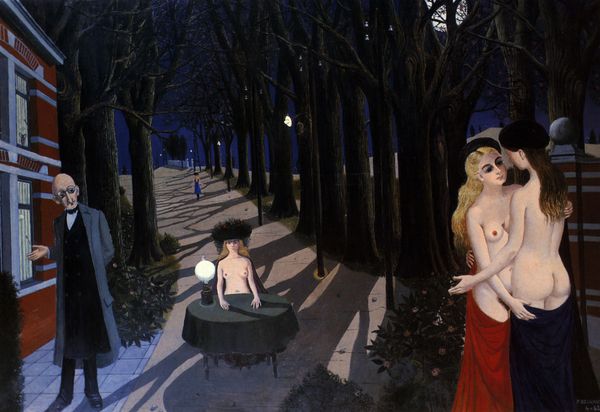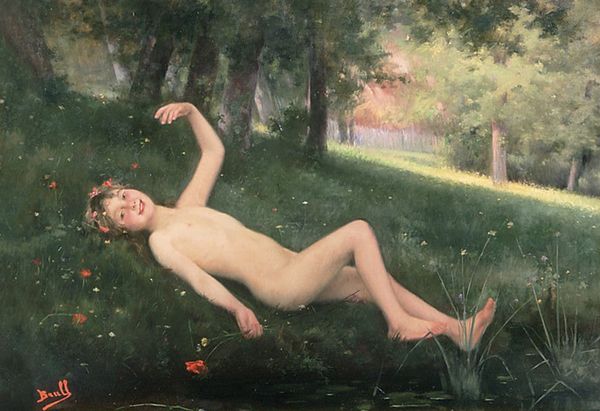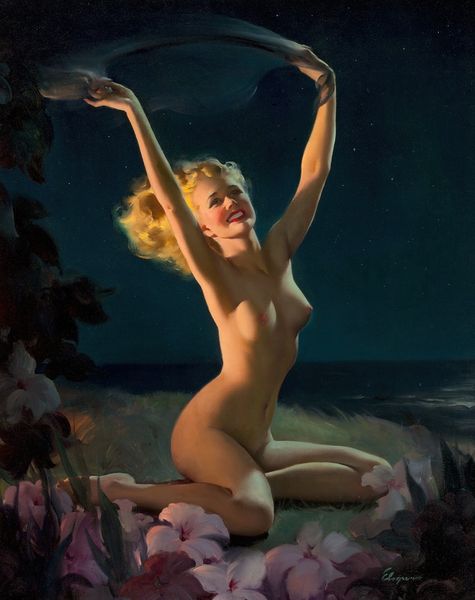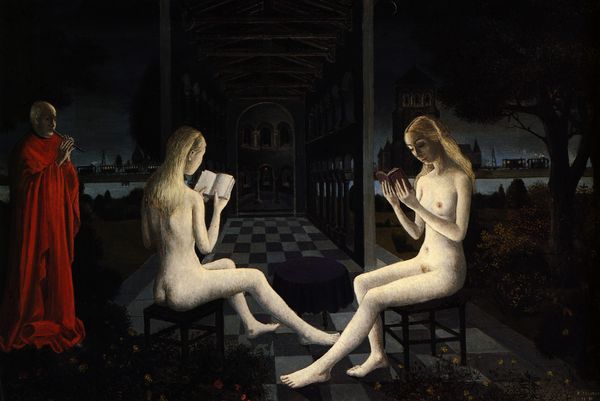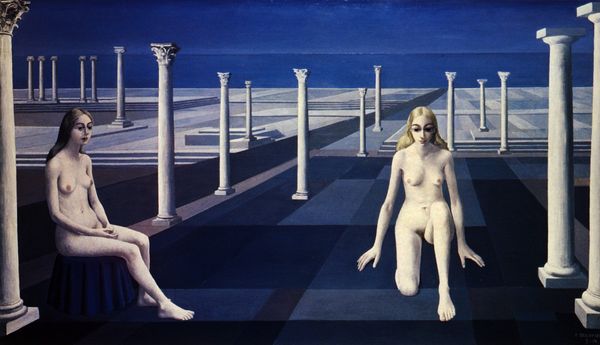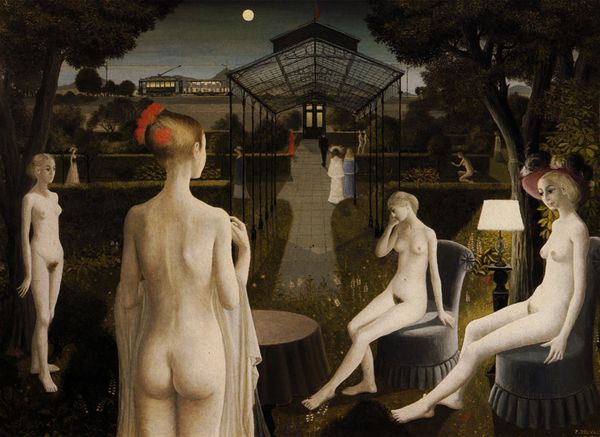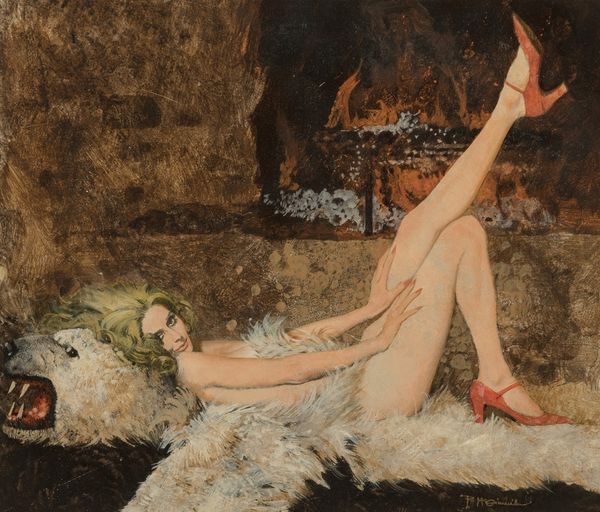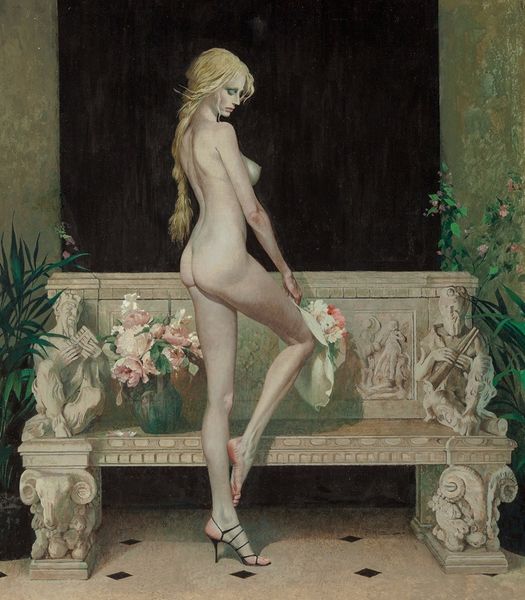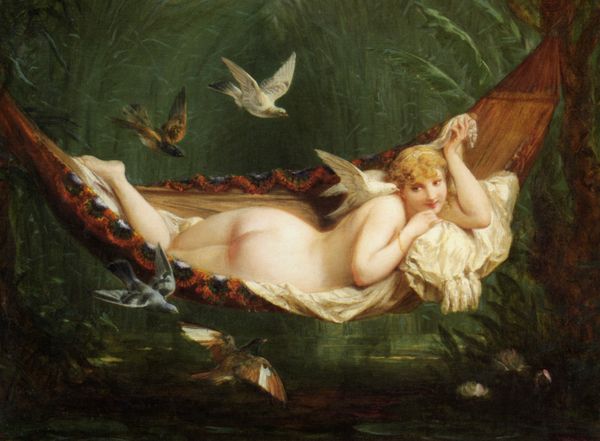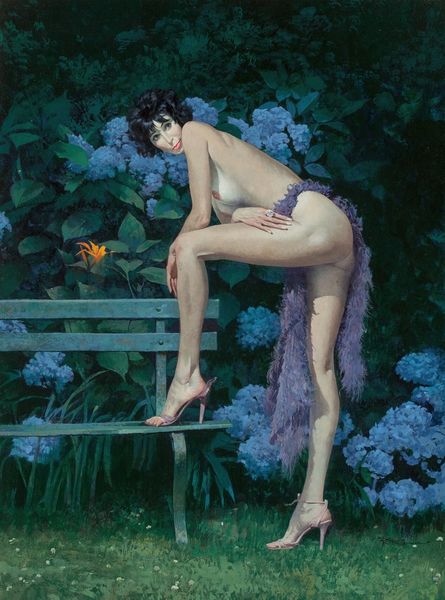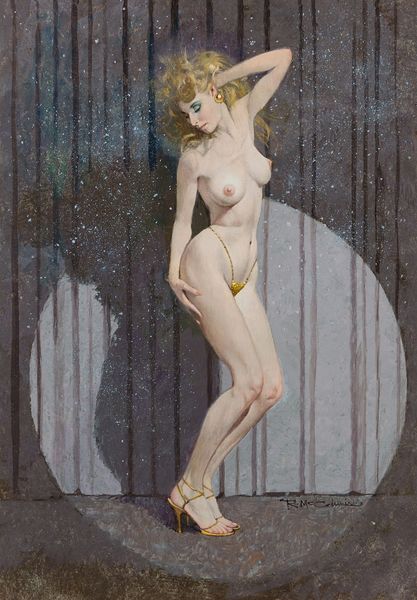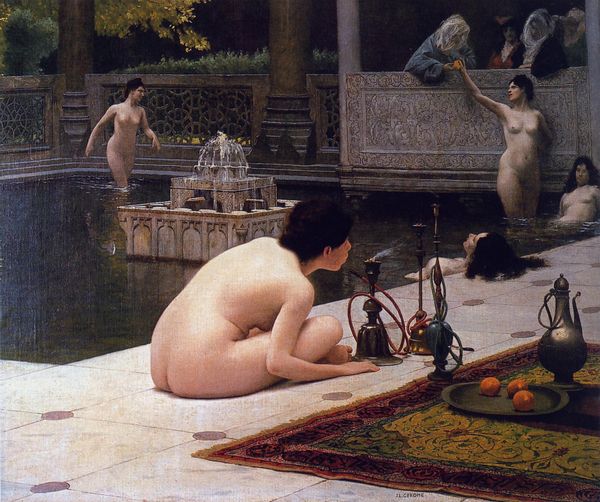
Dimensions: 122 x 244 cm
Copyright: Paul Delvaux,Fair Use
Editor: So, here we have Paul Delvaux’s “Aurore,” painted in 1964 using oil on canvas. It has this dreamlike quality, but with a slightly unsettling stillness. How do you interpret this work? Curator: This piece is striking in its exploration of feminine identity within a male gaze. Delvaux, consciously or not, places these nude female figures in a passive, almost staged environment. Notice the artificial light and how it creates an objectification. Where does power lie in the scenario he's creating here? Do we see liberation, or something closer to a surrealist display of idealized bodies, caught within patriarchal structures? Editor: I hadn't considered the idea of power dynamics so explicitly. It's true; they seem less like autonomous individuals and more like elements within a composition. Do you think the Romantic influences might suggest a reverence for the female form? Curator: Romanticism often idealized the female, which doesn’t necessarily equate to empowerment. Instead, the ideal becomes a limitation. Think about the context – 1964. Feminist discourse was gaining momentum. Could Delvaux’s work unintentionally be reflecting these societal tensions and questions about representation? It certainly is in conversation with them, don’t you think? Editor: It does invite a dialogue on objectification. Delvaux presents an "Aurore", yet who benefits from this awakening? Perhaps we must examine his representation within the evolving discourse on gender and power. Curator: Precisely. And by understanding those socio-historical layers, we uncover its more profound, albeit potentially problematic, meanings. Editor: I see it now! Thank you for opening up a deeper understanding of "Aurore."
Comments
No comments
Be the first to comment and join the conversation on the ultimate creative platform.
